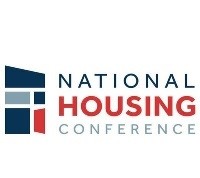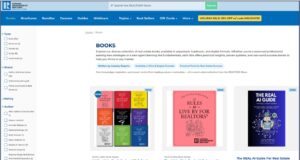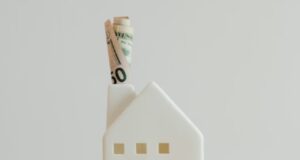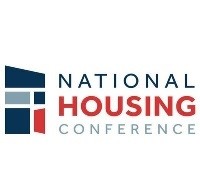Home-Related Delinquencies Fall Sharply in Fourth Quarter As Housing Market Recovers
Home-Related Delinquencies Fall Sharply in Fourth Quarter As Housing Market Recovers
Closed-end Delinquencies Remain Near Historical Lows
WASHINGTON, D.C. – (RealEstateRama) — Consumer delinquencies in key home-related categories fell sharply in last year’s fourth quarter as home values steadily increased, according to results from the American Bankers Association’s Consumer Credit Delinquency Bulletin. Installment loan delinquencies remained near historical lows, matching the third quarter’s composite number.
4QDelliBullepic.jpgHome-related delinquencies were down significantly in two out of three categories, with home equity loan and line delinquencies continuing a downward trend and approaching their 15-year averages for the first time since the recession. Home equity loan delinquencies fell 23 basis points to 2.68 percent of all accounts and home equity line delinquencies fell 13 basis points to 1.18 percent of all accounts. Property improvement loan delinquencies rose 5 basis points to 0.92 percent of all accounts.
“It’s been a long, rocky road, but home equity delinquencies have finally worked their way back to historical norms,” said James Chessen, ABA’s chief economist. “The strong and consistent rise in home prices over the last three years has restored equity, which makes keeping loans current even more of a top priority for homeowners. With rising home equity and shrinking delinquencies becoming the status quo, banks are more willing to extend new home equity loans and lines to qualified borrowers.”
The composite ratio, which tracks delinquencies in eight closed-end installment loan categories, remained at 1.41 percent of all accounts in the fourth quarter. This figure is 13 basis points below the fourth quarter 2014 composite ratio and remains well below the 15-year average of 2.24 percent. (See Historical Graphic.) The ABA report defines a delinquency as a late payment that is 30 days or more overdue.
Bank card delinquencies fell slightly in the fourth quarter, decreasing two basis points to 2.52 percent of all accounts. They remain well below their 15-year average of 3.70 percent.
“A confluence of factors have kept delinquencies very low,” said Chessen. “The economy’s better, jobs are up, wages have grown and consumers are keeping a watchful eye on their finances. Even during the holiday spending season when temptation to overspend reaches its peak, consumers did a good job of ensuring expenses did not outpace income.”
Chessen anticipates that continued consumer discipline and steady economic conditions will help keep delinquencies near historically low levels for the foreseeable future.
“The national savings rate is at one of its healthiest points since the recession and trending upward, which means people are well-positioned to repay their debts,” said Chessen. “Disciplined saving, along with steady job growth and climbing household wealth, signal that delinquency levels are likely stay near these historic lows for some time.” (See Economic Charts.)
The fourth quarter 2015 composite ratio is made up of the following eight closed-end loans. All figures are seasonally adjusted based upon the number of accounts.
CLOSED-END LOANS
Personal loan delinquencies fell from 1.52 percent to 1.44 percent.
Direct auto loan delinquencies rose from 0.74 percent to 0.75 percent.
Indirect auto loan delinquencies rose from 1.51 percent to 1.54 percent.
Mobile home delinquencies fell from 3.59 percent to 3.16 percent.
RV loan delinquencies rose from 0.95 percent to 0.96 percent.
Marine loan delinquencies rose from 1.09 percent to 1.14 percent.
Property improvement loan delinquencies rose from 0.87 percent to 0.92 percent.
Home equity loan delinquencies fell from 2.91 percent to 2.68 percent.
In addition, ABA tracks three open-end loan categories:
OPEN-END LOANS
Bank card delinquencies fell from 2.54 percent to 2.52 percent.
Home equity lines of credit delinquencies fell from 1.31 percent to 1.18 percent.
Non-card revolving loan delinquencies fell from 1.71 percent to 1.63 percent.
Consumer Tips
For borrowers having trouble paying down debts, ABA advises taking action — sooner rather than later — to solve debt problems. Proven tips are listed below. Additional consumer information on budgeting, saving, managing credit and more is available at ABA.com/Consumers.
Talk with creditors – the sooner you talk to them, the more options you have;
Don’t charge more purchases until your problems are solved;
Avoid bankruptcy – it’s a short-term solution with long-term consequences; and
Contact Consumer Credit Counseling Services at 1-800-388-2227.
Glossary
Indirect auto loan: loan arranged through a third party such as an auto dealer.
Direct auto loan: loan arranged directly through a bank.
Delinquency: late payment that is 30 days or more overdue.
Bank card: a credit card provided by a bank.
Closed-end loan: a loan for a fixed amount of money with a fixed repayment period and regularly scheduled payments.
Open-end loan: a loan with a fixed amount of available credit but a balance that fluctuates depending on usage such as a line of credit.
The American Bankers Association is the voice of the nation’s $16 trillion banking industry, which is composed of small, regional and large banks that together employ more than 2 million people, safeguard $12 trillion in deposits and extend more than $8 trillion in loans.
?*EDITORS: ABA Chief Economist James Chessen can be scheduled for interviews by calling 202-663-5471.
ABA Media Contact: Mike Townsend
(202) 663-5471
Email:
Follow us on Twitter: @ABABankers

















